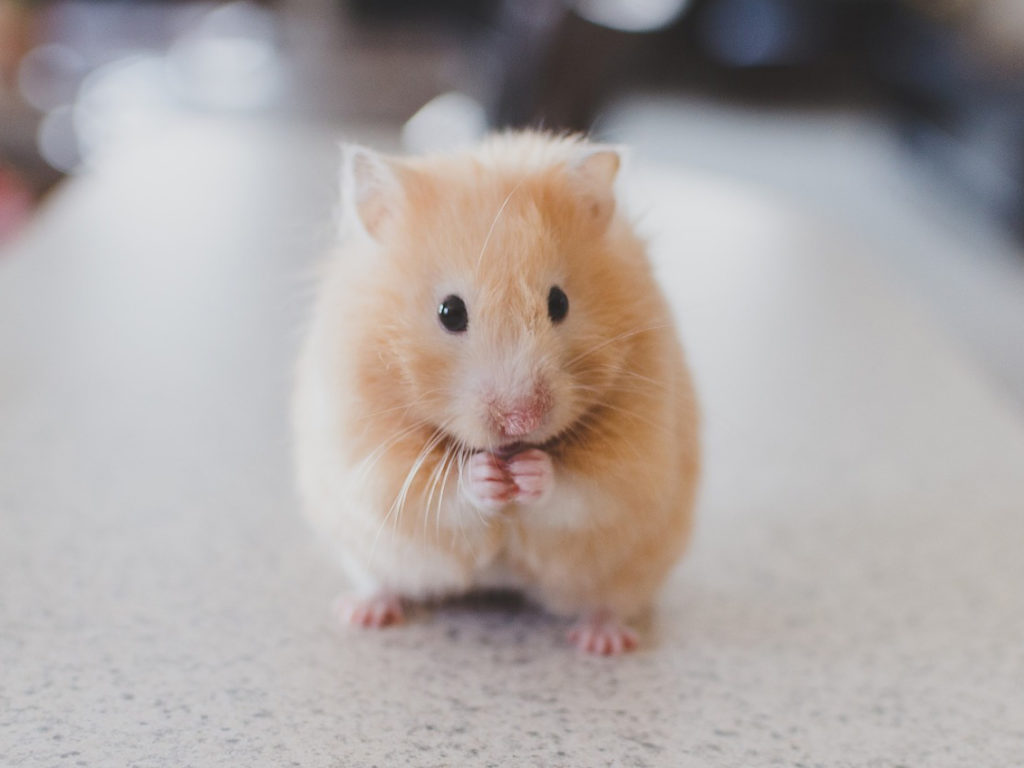Bringing Home Your First Rodent
While many may not find a rodent as a first choice for a pet, with some insight and guidance you may be more receptive to the idea of a small hamster or rat becoming a suitable pet for your family.

“Rats are probably the most social and interactive of the small rodents,” said Dr. Sharman Hoppes, clinical assistant professor at the Texas A&M College of Veterinary Medicine & Biomedical Sciences. “Rats are gentle, seldom bite, and are active during the day and are fairly easy to take care of. Rats do not have special dietary needs or sensitive stomachs, although they do need a good quality rodent block or pellet.” ‘The seed mix diets are not a nutritionally adequate diet.”
To determine which pet may be best for you, you need to evaluate your expectations.
“When picking out a pet rodent, you should select an active, social rodent with clean eyes, clean nose, and normal teeth. The skin should be well groomed and clean. There should be no lumps or bumps on their skin,” said Hoppes.
Small rodents, such as mice and hamsters, can bite more and tend to be more active at night.
Guinea pigs and chinchillas are a bit bigger and are gentle pets, but they have special dietary needs and their teeth continuously grow.
Gerbils are unlikely to bite, if handled gently. They have few health problems and are the cleanest of all the commonly kept pet rodents.
If you are more interested in observing your pet and don’t have as much time, a gerbil, hamster, or mouse is an option as they are happy living in their cage.
“If you want a socially active pet that needs lots of attention and activity, a rat, chinchilla, or guinea pig is a great pet,” said Hoppes. “Rats are so social that they should not be housed alone. If you are a night owl, then hamsters may be best since they tend to sleep all day and run in their wheel all night.
One important aspect of keeping a pet rodent is that their cage needs to be cleaned one to two times a week to keep ammonia levels down. Also, keeping the cage clean will help decrease the incidence of a respiratory disease.
“Rodents are animals and therefore require care,” said Hoppes. “All pet rodents need a clean large cage, chew toys, ladders, plastic or PVC pipe, and daily interaction. Beddings such as Paper, aspen, or walnut shavings are best, while corncob, pine, and cedar shavings should be avoided.”
Rodents need fresh water and food constantly. Guinea pigs and chinchillas have a special need for timothy hay since they have continuously growing cheek teeth. This hay helps keep the teeth from overgrowing. Additionally, guinea pigs need vitamin C daily. All rodents can have a small amount of fruits and vegetables for treats.
Chinchillas also need daily dust baths, and they and guinea pigs are very sensitive to heat and humidity. Both are susceptible to heatstroke in temperatures as low as 80-85 degrees, especially if the humidity is higher than 40%.
“Pet rodents do not need vaccinations,” said Hoppes. “There are few diseases to be concerned with, and while salmonella infection has been documented, it is rare. Rat bite fever, caused by a bacterial infection, may occur after a rat bite. This can be prevented by immediately disinfecting any bite wound from a rat.”
While diseases are uncommon in rodents, rats are prone to mammary tumors and hamsters often have diarrhea (wet tail). Many rodents are also prone to respiratory disease.
It is important to keep pet rats away from wild ones and to wash your hands after handling any small mammal. Guinea pigs and chinchillas are susceptible to ring worm so any hair loss or patchy areas on the skin should be seen by a veterinarian for treatment immediately.
The life span of pet rodents varies. Mice and hamsters generally live one to two years, rats two to three years, gerbils three to five years, guinea pigs five to seven years, and chinchillas live eight to 12 years or longer.
“Small rodents should not be pets for small children,” said Hoppes. “Children less than 10 years old should be supervised closely when handling small rodents. The care and monitoring of any pet is ultimately the parent’s responsibility.”
Pet Talk is a service of the College of Veterinary Medicine & Biomedical Sciences, Texas A&M University. Stories can be viewed on the Web at vetmed.tamu.edu/news/pet-talk. Suggestions for future topics may be directed to editor@cvm.tamu.edu.


